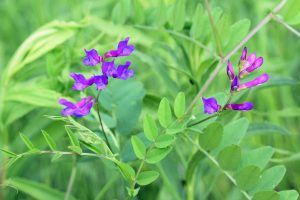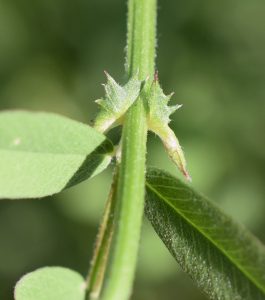American Vetch

 Vicia americana gives us eye-catching petal colors startling in late spring and continuing throughout the summer, first blooming about the same time as Canada anemone. Meanwhile, lilacs have faded and sumacs are just beginning to form their flower buds, weeks away from opening. American vetch is a native plant to N. America, and so colorful in a palette range of magentas, pinks and purples shining out from habitats of swamps, woods, road banks, along forest trails, in prairies and in fields.
Vicia americana gives us eye-catching petal colors startling in late spring and continuing throughout the summer, first blooming about the same time as Canada anemone. Meanwhile, lilacs have faded and sumacs are just beginning to form their flower buds, weeks away from opening. American vetch is a native plant to N. America, and so colorful in a palette range of magentas, pinks and purples shining out from habitats of swamps, woods, road banks, along forest trails, in prairies and in fields.
Like many other members of the Pea family, leaves are compound. They are arranged pinnately in 4 to 8 pairs of leaflets with a tendril at the terminal end which allows American vetch to wind around other plants for support as it makes its way skyward on a one to 3 foot vine. According to the Friends of the Wildflowers site, stipules are what help to differentiate between different members of climbing vines in the Pea family. Stipules are a pair of leaflike appendages borne at the base of a leaf stalk. American vetch stipules are uniquely distinct from others (such as veiny pea and pale vetchling). One end is skinny and sharply pointed while the other end has 3 sharp teeth (see photo). [Note the invasive, noxious exotic weed, crown vetch, which is easily identified by its lack of a tendril at the terminal end of the compound leaf and also by its rounded ‘crown’ flower-cluster shape.]

Fruit is a 1″ pea-shaped pod. American vetch provides excellent forage for a wide variety of animals and birds including game birds, small mammals, black bear, grizzly bear and mule deer. Horses, sheep and cattle will browse on the aerial portions as well.
Native Americans used the pods, seeds, and leaves of American vetch as food. A poultice of the leaves has been used to treat spider bites, an infusion of the plant has been used as eyewash and an infusion of the tops has been used as a wash in sweat houses. American vetch has also been used as a panacea, an aphrodisiac, and a good luck charm.
